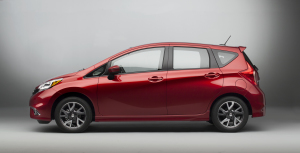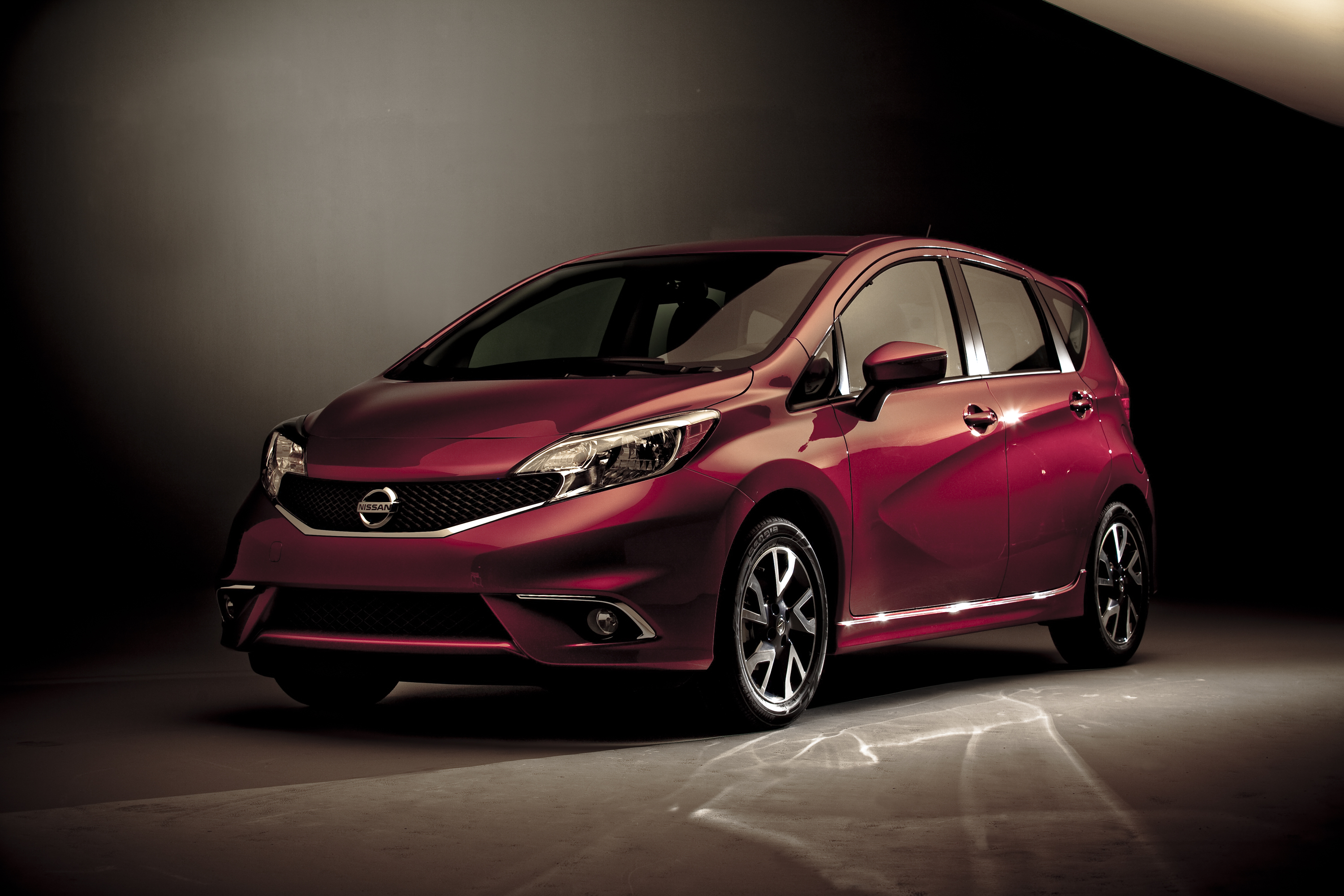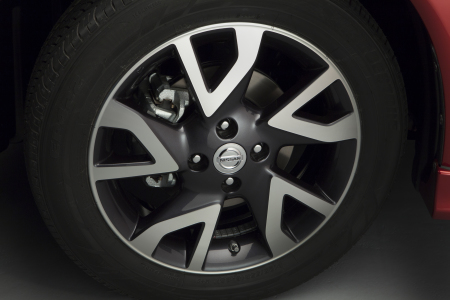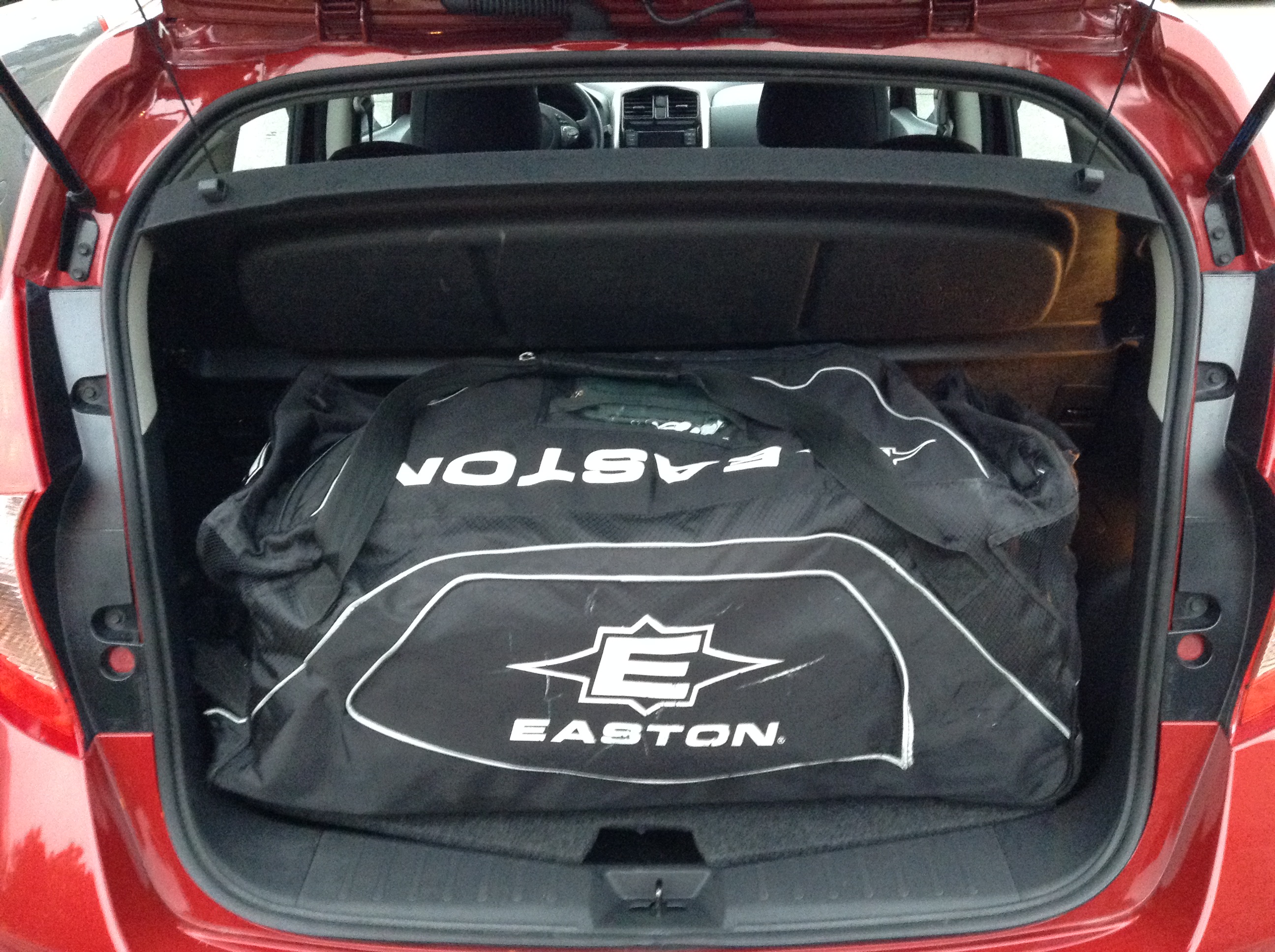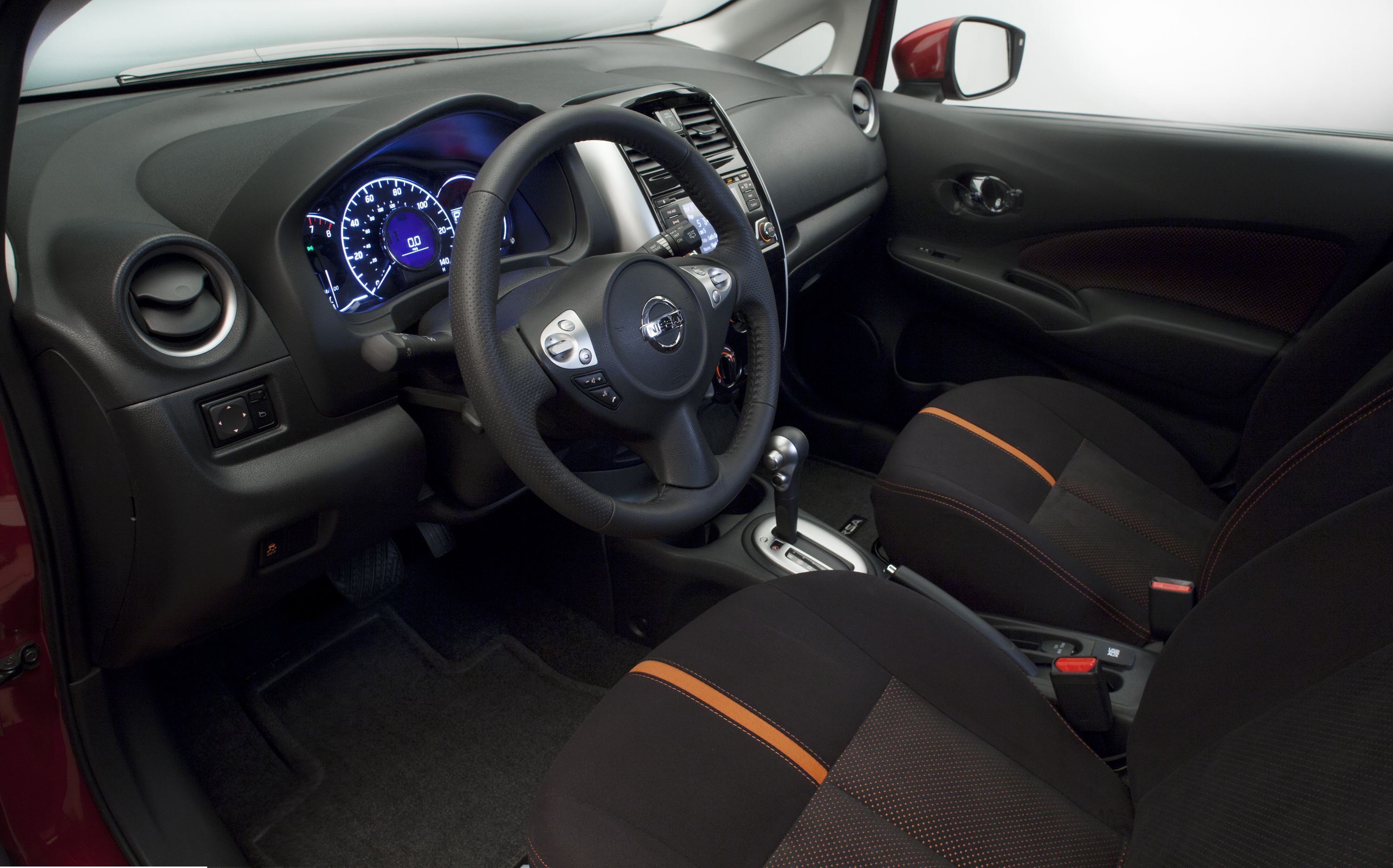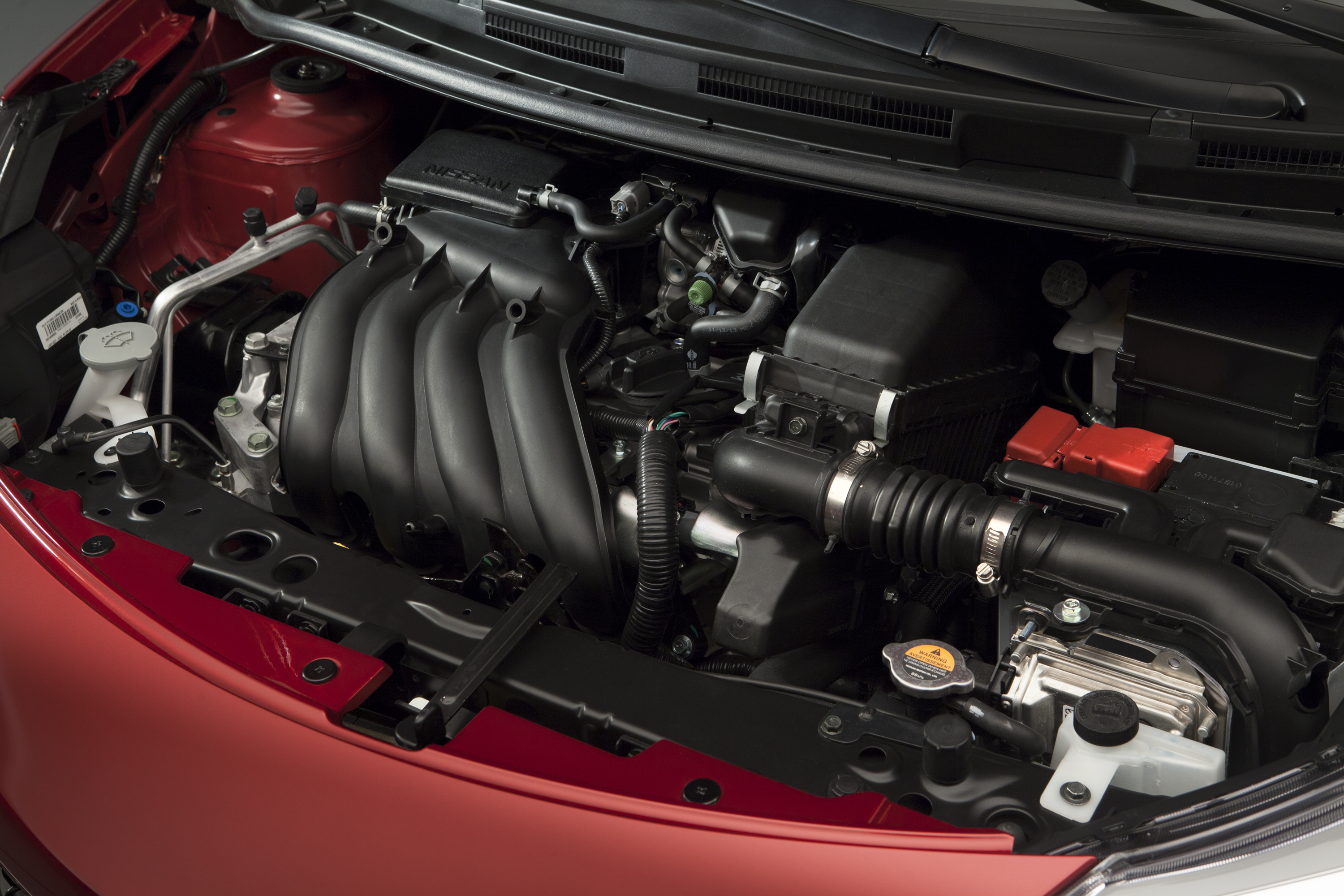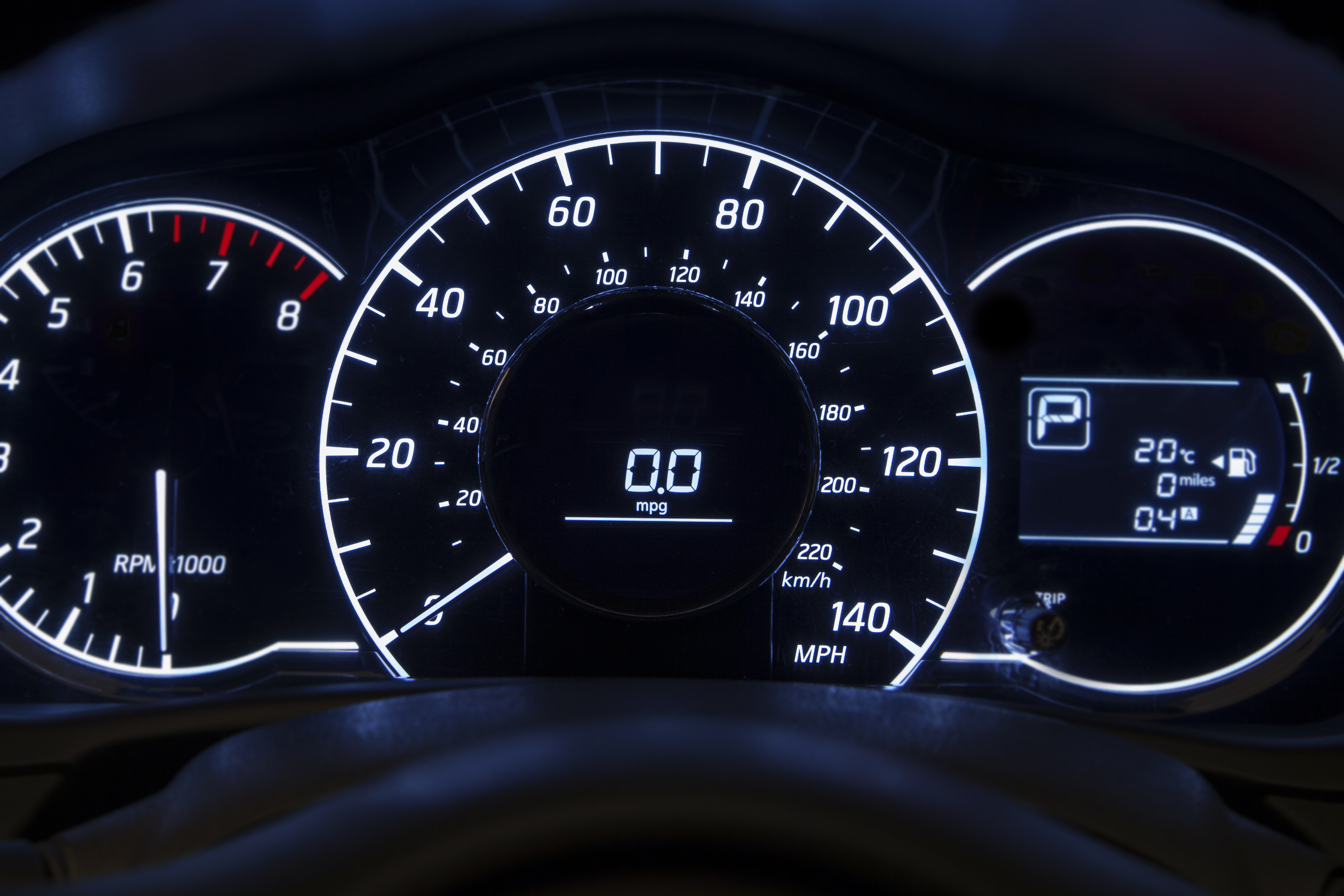Four-door hatchbacks may be the most practical vehicles on the road, bar none. Most carmakers have an entry in this market segment, and Nissan upped the ante with the 2015 Versa Note.
I spent a week with the SR model ($18,698 MSRP – the base Versa starts at $14,298) not long after I tested the Nissan Micra, and the two models bear comparison.
Exterior design
Touches like moulded doors, new headlights and a spoiler give the Versa its sporty hatch look.
My SR sat on 16″ x 6.0″ aluminum-alloy wheels that featured an attractive “five-blade” design.
Interior
The Versa offers more room than the Micra, particularly in the back seat and hatch. The cargo cover didn’t get pushed up when I shut the hatch on my hockey bag. I didn’t even have to try the “divide n hide” adjustable floor, which gives a few more inches of depth if you need it.
The Versa’s cabin room came in handy the night I drove three adult males comfortably to their car at a subway stop the night of Nuit Blanche in Toronto. (In the Micra, the guy behind me would have had to sit with his knees at his chin.) Getting in and out of the Versa was easy as well.
Comfortable as well as roomy, the cabin boasts touches like firm synthetic suede seats with orange accents and stitching and a leather-wrapped steering wheel.
Engine & transmission
A short hood opens to reveal a 1.6L engine wedged between the front grill and the firewall.
Nissan’s published numbers (109 Horsepower 7.5/6.0 City/Hwy L/100 km*) described the results I got from the Versa Note, par for the course in economy four-door hatches.
My SR tester came with the Xtronic CVT® (Continuously Variable Transmission), though I wish I could have booted about with the 5-speed manual. The car didn’t lack for power in everyday driving, but the wheels-at-the-corners stance and feel would have been more fun to whip around if I, instead of Nissan’s sensible computer, could have chosen the gears.
In-car electronics
A narrow space between the front seats leaves the car charger and USB port exposed. I wasn’t fond of this deign detail in the Micra either, since you can’t leave devices plugged in yet out of sight. An armrest folds down from the right side of the driver’s seat, though I would have preferred a narrow cubby covering the ports serve this purpose instead.
The SR ships with a rearview monitor. Nissan makes the 360-degree-view AroundView camera system available on the Note too. I tried it on a Nissan Rogue, and it strikes me as another one of those innovations that will become standard equipment on vehicles of all kinds.
Take the Versa out of reverse and you can enjoy the premium AM/FM/CD audio system you control from a five-inch colour display.
Nissan doesn’t go overboard with trip computer and fuel economy numbers, but they appear front and centre on the dash, in big numbers.
A “menu” button on the steering wheel lets you cycle through measures like litres per hundred kilometres, distance to an empty tank and average speed and fuel economy.
The Bluetooth connection between my iPod and the car didn’t perform consistently. I wrote this problem off to reported issues of the iOS8 update I installed on my iPod shortly before I tested the Versa, and I didn’t bother trying to troubleshoot. Besides, as long as I connected the iPod to the car using a USB connection, the stereo head unit read my music flawlessly.
Like many other carmakers, Nissan promotes the smartphone friendliness of its vehicles in the form of its own app interface, Nissan Connect. Install an app on your phone and you get hands-free access to text messages and calls, plus navigation, streaming music and a variety of other apps (Facebook, Google Places, Twitter, Yelp and so on).
IMHO, carmakers must realize that they need not get into the app delivery business. The giants in the field – Apple, Google et. al. – are delivering systems that carmakers can put in the dashboards of their vehicles that match the experience car buyers already know on their phones. Buyers will appreciate the gentler learning curve and carmakers can lessen the risk of going into the software support business if they just leave the in-vehicle app interfaces to application and smartphone operating system developers.
Conclusion
Given the vast amounts of time people spend using their phones and how late Google and Apple were to the in-car electronics game, I can understand why Nissan and its competitors would developed systems like Nissan Connect. Now, however, it’s better that they stick to delivering fine driving experiences like the one the Versa Note provides and leave the heavy-app lifting to the pros.
